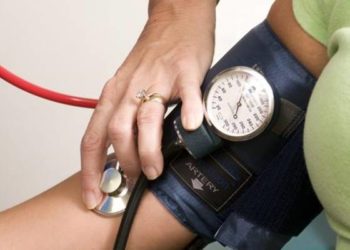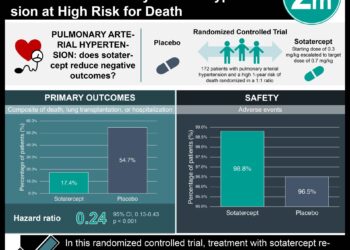Catheter-based renal denervation reduces blood pressure in patients with uncontrolled hypertension
1. Meta-analysis of sham-controlled randomized trials of catheter-based renal denervation demonstrated reduction in ambulatory and office systolic blood pressures.
2. Second-generation trials demonstrated greater reduction in ambulatory systolic blood pressure compared to first generation trials.
Evidence Rating Level: 1 (Excellent)
Study Rundown: Hypertension is one of the most common adult diseases and a known risk factor for cardiovascular disease. Medical therapy is the most widely studied intervention for reducing blood pressure and cardiovascular events. Renal artery sympathetic denervation procedures have been developed for additional reduction of blood pressure. Initial clinical trials demonstrated inconsistent benefit and were limited by study design, procedural technique, patient selection criteria, and medical therapy regimens in the control groups. This study is a meta-analysis of sham-controlled randomized trials of catheter-based renal sympathetic denervation (RSD) in patients with uncontrolled hypertension. The study found that RSD was associated with reduction in ambulatory systolic blood pressure (ASBP), office systolic and diastolic blood pressure. Second-generation trials also demonstrated greater reduction in daytime ASBP.
The main strengths of the study include the large number of patients from pooled trials with sham-control designs. The main limitations of the study are the short-term follow-up of most trials, and endpoints evaluating changes in blood pressure and not clinical endpoints of major cardiovascular events. These findings should help guide future studies to evaluate the long term effects of catheter-based RSD on morbidity and mortality.
Click to read the study in JACC
Relevant Reading: A Controlled Trial of Renal Denervation for Resistant Hypertension
In-Depth [systematic review and meta-analysis]: This study is a systematic review and meta-analysis of randomized control trials that compared catheter-based RSD to sham procedures, and evaluated blood pressure changes in patients with uncontrolled hypertension. Trials were excluded if they enrolled fewer than 50 patients, or were only available in abstract form.
Six trials encompassing 977 participants were included in the analysis, with 3 trials being considered “second generation” due to updated patient selection criteria, and procedural techniques. RSD was linked to reduction in 24-hour ASBP (Weighted Mean Difference [WMD]= -3.65 mm Hg, 95% CI: -5.33 to -1.98; p < 0.001), daytime ASBP (WMD -4.07 mm Hg, 95% CI: -6.46 to -1.68; p < 0.001), office systolic BP (WMD -5.53 mm Hg, 95% CI: -8.18 to -2.87; p <0.001), 24-h ambulatory diastolic BP (WMD -1.71 mm Hg, 95% CI: -3.06 to -0.35; p = 0.01), daytime ambulatory diastolic BP (WMD -1.57 mm Hg, 95% CI: -2.73 to -0.42; p = 0.008), and office diastolic BP (WMD -3.37 mm Hg, 95% CI: -4.86 to -1.88; p < 0.001). Second generation trials demonstrated greater reduction in daytime ASBP (6.12 mm Hg vs. 2.14 mm Hg; p interaction = 0.04).
Image: PD
©2019 2 Minute Medicine, Inc. All rights reserved. No works may be reproduced without expressed written consent from 2 Minute Medicine, Inc. Inquire about licensing here. No article should be construed as medical advice and is not intended as such by the authors or by 2 Minute Medicine, Inc.





